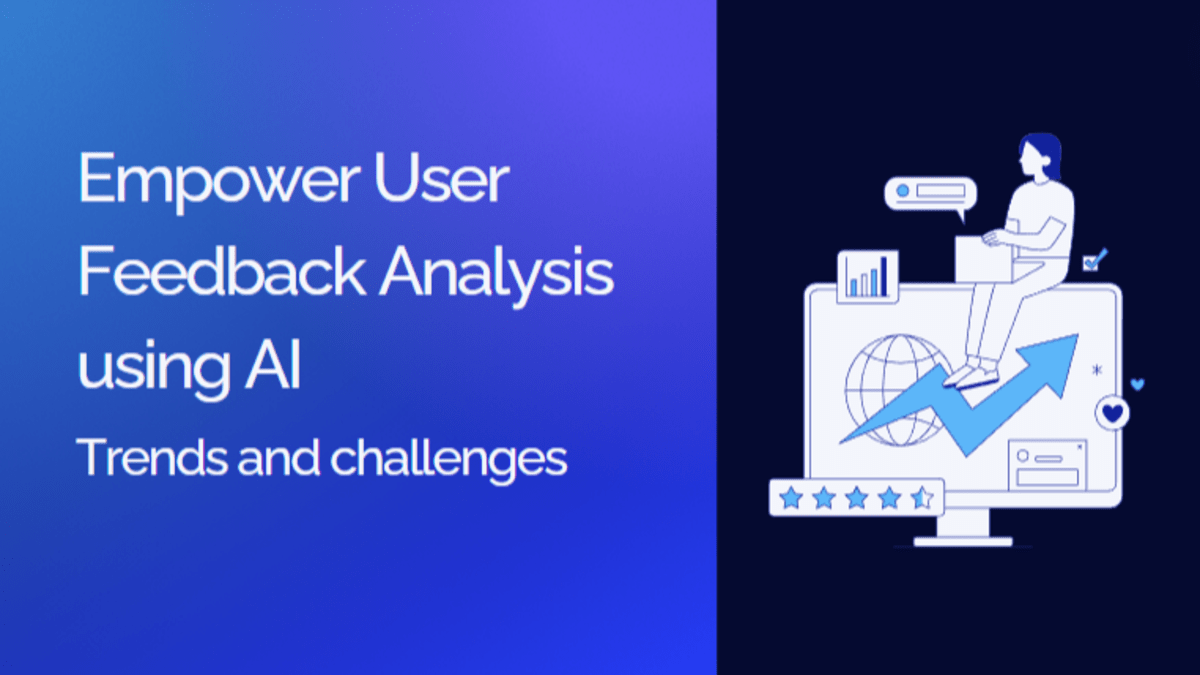What is User Feedback Analysis?
User feedback analysis is all about gathering and understanding what users think about a product, service, or experience. Feedback can come from different places like surveys, reviews, social media comments, and direct conversations with customers. The main goal is to find out how satisfied users are, pinpoint areas that need improvement, understand what users want and need, and make smart decisions to make the user experience better. By looking closely at this feedback, businesses can get a clearer picture of what their customers think, solve problems more efficiently, and keep improving what they offer.
Why User Feedback Analysis is Important?
By focusing on analyzing user feedback, businesses can better understand their customers and improve how they serve them. This leads to growth and long-term success by making sure products and services meet customer needs.
- Understanding Customer Needs: It helps businesses understand what customers want and need, allowing them to tailor products and services to meet these demands.
- Improving Products and Services: Feedback highlights areas for improvement, enabling businesses to make necessary changes and enhancements.
- Enhancing Customer Satisfaction: By addressing issues and implementing suggestions from feedback, businesses can improve overall customer satisfaction and loyalty.
- Identifying Trends: Regular analysis can reveal emerging trends and patterns in customer behavior and preferences, helping businesses stay ahead of the competition.
- Making Informed Decisions: Feedback provides valuable insights that inform strategic decision-making, ensuring that business actions are aligned with customer expectations.
- Building Customer Trust: Showing customers that their opinions matter and acting on their feedback builds trust and strengthens customer relationships.
- Increasing Retention: Satisfied customers are more likely to stay loyal to a brand. By continuously improving based on feedback, businesses can enhance customer retention rates.
- Boosting Innovation: Customer feedback can inspire new ideas and innovations, driving the development of new features, products, or services.
Benefits of Using Feedback Analysis using AI

- Efficiency: AI automates the process of collecting, sorting, and analyzing feedback, saving time and resources compared to manual methods.
- Accuracy: AI algorithms can process large volumes of feedback data quickly and accurately, reducing human error in sentiment analysis and categorization.
- Real-time Insights: AI enables businesses to analyze feedback in real-time, allowing for timely responses to customer concerns and trends.
- Scalability: AI systems can handle large amounts of feedback data from diverse sources, making it easier to scale analysis efforts as business grows.
- Deeper Insights: AI can uncover subtle patterns and trends in feedback that may not be immediately apparent, providing deeper insights into customer preferences and behaviors.
- Personalization: By analyzing individual customer feedback at scale, AI helps businesses tailor products and services to better meet customer needs and expectations.
- Continuous Improvement: AI-powered feedback analysis provides ongoing monitoring and feedback loops, enabling businesses to continuously improve products and services based on customer input.
- Competitive Advantage: Leveraging AI for feedback analysis allows businesses to stay ahead of competitors by responding faster to customer needs and delivering better customer experiences.
How AI Feedback Analysis Works?
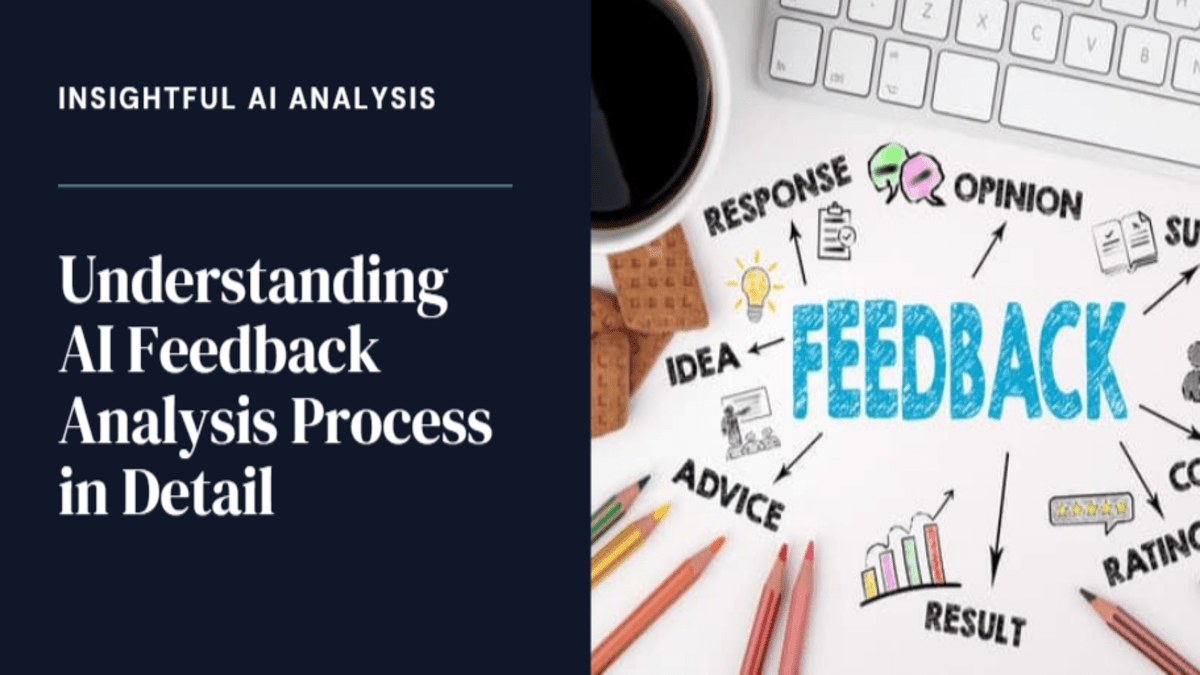
AI feedback analysis works through several key steps:
- Data Collection: AI collects feedback data from various sources, such as surveys, reviews, social media, and customer interactions.
- Natural Language Processing (NLP): AI uses NLP techniques to process and understand human language in the feedback. This includes tasks like tokenization (breaking down text into words or phrases), sentiment analysis (determining if the sentiment is positive, negative, or neutral), and entity recognition (identifying names, places, or other entities mentioned).
- Text Classification: AI categorizes feedback into predefined categories or themes based on the content and context of the text. This helps in organizing and prioritizing feedback for further analysis.
- Topic Modeling: AI identifies topics or subjects within the feedback data without predefined categories. It groups similar words and phrases together to uncover hidden patterns or themes.
- Sentiment Analysis: AI evaluates the sentiment expressed in the feedback to gauge customer satisfaction or dissatisfaction. This helps businesses understand overall sentiment trends and react accordingly.
- Contextual Analysis: AI considers the context in which feedback is given, including customer history, product usage, or previous interactions. This contextual understanding provides deeper insights into customer preferences and behaviors.
- Insights Generation: AI generates actionable insights from the analyzed feedback, such as identifying recurring issues, highlighting areas for improvement, or suggesting strategies to enhance customer satisfaction.
- Visualization and Reporting: AI presents the analyzed data in visual formats like charts or graphs and generates reports that summarize key findings and recommendations for business decision-makers.
- Continuous Learning: AI algorithms can learn from new data over time, improving their accuracy and relevance in analyzing feedback as they encounter more examples and patterns.
Use Cases of User Feedback Analysis
These examples show how using AI to analyze user feedback can help businesses in different industries. It gives them practical insights to enhance customer experiences and grow their business effectively.
- Efficiency: AI automates the process of collecting, sorting, and analyzing feedback, saving time and resources compared to manual methods.
- Accuracy: AI algorithms can process large volumes of feedback data quickly and accurately, reducing human error in sentiment analysis and categorization.
- Real-time Insights: AI enables businesses to analyze feedback in real-time, allowing for timely responses to customer concerns and trends.
- Scalability: AI systems can handle large amounts of feedback data from diverse sources, making it easier to scale analysis efforts as business grows.
- Deeper Insights: AI can uncover subtle patterns and trends in feedback that may not be immediately apparent, providing deeper insights into customer preferences and behaviors.
- Personalization: By analyzing individual customer feedback at scale, AI helps businesses tailor products and services to better meet customer needs and expectations.
- Continuous Improvement: AI-powered feedback analysis provides ongoing monitoring and feedback loops, enabling businesses to continuously improve products and services based on customer input.
- Competitive Advantage: Leveraging AI for feedback analysis allows businesses to stay ahead of competitors by responding faster to customer needs and delivering better customer experiences.
Traditional Methods of Analyzing Feedback
Analyzing feedback the traditional way is time-consuming and depends a lot on people’s experience to find out what customers are really saying.
- Collection: Feedback is gathered from various sources such as customer surveys, comment boxes, emails, and direct interactions.
- Sorting and Categorization: Responses are manually sorted into categories based on common themes or topics, such as product quality, customer service, or delivery issues.
- Quantification: Analysts quantify feedback by counting the number of responses in each category to gauge the frequency of specific issues or concerns.
- Qualitative Analysis: Analysts read through individual responses to understand the context and sentiment behind each comment. This step involves interpreting the feedback to identify underlying reasons or suggestions for improvement.
- Reporting: Findings are compiled into reports that summarize key insights, trends, and recommendations based on the analyzed feedback.
- Action Planning: Based on the analysis, businesses develop action plans to address identified issues, improve customer satisfaction, and enhance their products or services.
How AI Transforms User Feedback Analysis
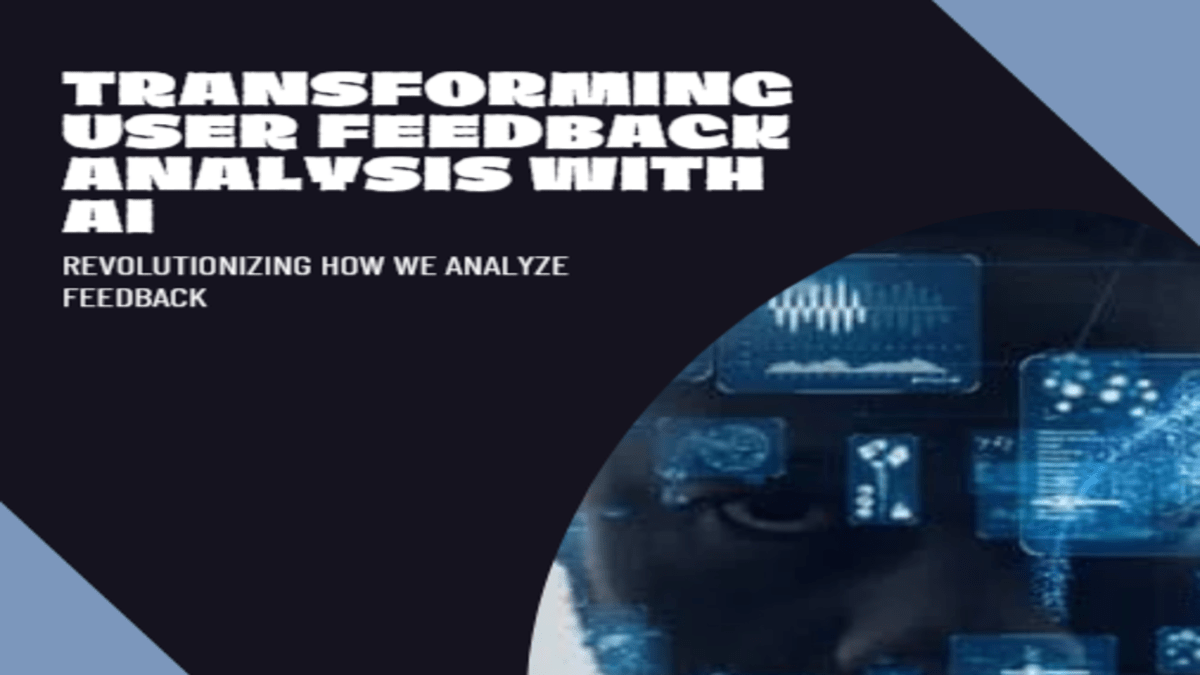
Automation of Data Collection
AI can automatically collect feedback from various sources like social media, emails, surveys, and reviews, saving time and ensuring no feedback is missed.
Example of Automation of Data Collection
Automating data collection involves using technology to gather information automatically instead of manually. For example, a retail store uses barcode scanners to collect sales data instantly, reducing the need for manual input and saving time.
Sentiment Analysis
Example of Sentiment Analysis
A restaurant receives hundreds of reviews daily. AI can quickly analyze the sentiment of these reviews to determine if customers are generally happy or dissatisfied with their service.
Categorization and Tagging
AI can categorize feedback into different themes or topics, making it easier to identify common issues or suggestions.
Example of Categorization
An e-commerce site uses AI to categorize feedback into themes such as delivery times, product quality, and customer service. This allows them to address specific areas that need improvement.
Trend Identification
AI can identify emerging trends in user feedback, helping businesses stay ahead of potential issues or capitalize on positive trends.
Example of Trend Identification
A software company notices through AI analysis that many users are requesting a particular feature. They can prioritize adding this feature in future updates to meet customer demand.
Implementing AI for Feedback Analysis
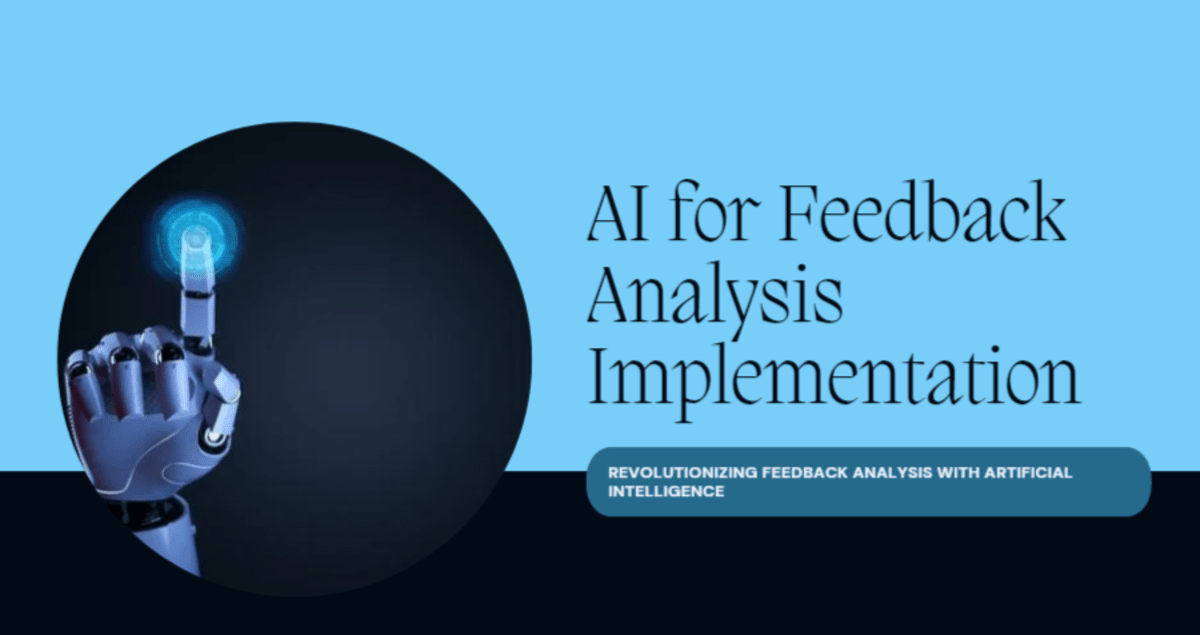
Choosing the Right AI Tools
There are various AI tools available for feedback analysis, such as IBM Watson, Google Cloud AI, and custom-built solutions. Businesses need to choose the tool that best fits their needs and budget.
Integrating AI with Existing Systems
Integrating AI with existing customer relationship management (CRM) systems and feedback collection platforms ensures seamless data flow and efficient analysis.
Training AI Models
Training AI models with historical data ensures they accurately understand and categorize feedback. Continuous training and updates are necessary to maintain accuracy.
Monitoring and Improving AI Performance
Regularly monitoring AI performance and making necessary adjustments ensures the system remains effective and accurate in analyzing feedback.
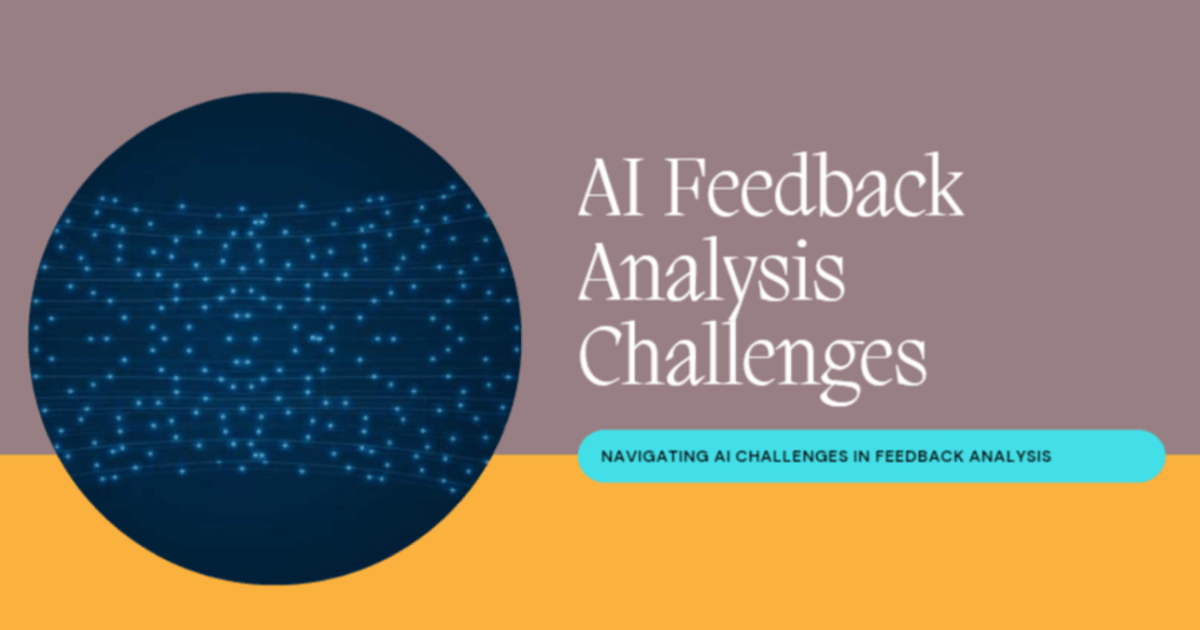
Using AI in customer feedback analysis presents several challenges that businesses must navigate:
- Complex Data Interpretation: AI sometimes struggles with understanding the nuances of human language, including sarcasm, colloquialisms, and cultural contexts, which can lead to misinterpretations of feedback.
- Data Privacy Concerns: Handling large volumes of customer data requires stringent measures to ensure privacy and comply with regulations like GDPR. Poor data handling can result in legal trouble and damage your reputation.
- Integration with Existing Systems: Integrating AI tools with existing customer relationship management (CRM) systems or feedback platforms can be complex and may require significant technical expertise and resources.
- Algorithm Bias: AI algorithms can inherit biases from the data they are trained on, leading to skewed results in feedback analysis. Businesses need to continuously monitor and mitigate bias to ensure fair and accurate analysis.
- Cost and Resources: Implementing AI solutions for feedback analysis can be costly, requiring investment in technology, training, and infrastructure. Small businesses may find it challenging to justify these expenses.
- Accuracy and Reliability: While AI can analyze large volumes of data quickly, ensuring the accuracy and reliability of insights generated is critical. Mistakes in analysis can cause bad business decisions and unhappy customers.
- User Acceptance: Customers may be wary of AI-driven feedback analysis, preferring human interaction or fearing loss of personal touch. Building trust and transparency around AI usage is essential for user acceptance.
- Continuous Improvement: AI models require continuous training and refinement to adapt to evolving customer behaviors and feedback trends. This ongoing maintenance demands ongoing investment and attention from businesses.
The Future of AI in User Feedback Analysis
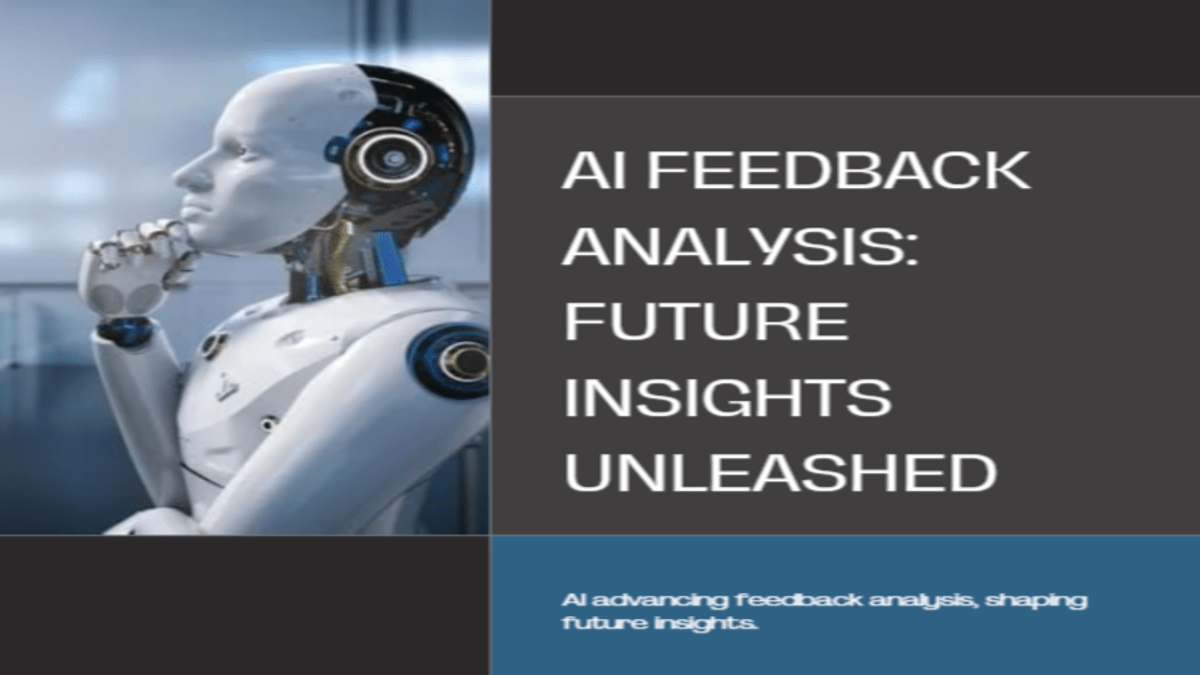
Conclusion
AI is revolutionizing user feedback analysis, making it faster, more accurate, and more insightful. By implementing AI, businesses can better understand their users, make informed decisions, and ultimately improve their products and services.
Top SaaS Products : Zeda.io, Freetext.ai
FAQs
Q:1: What is user feedback analysis?
Ans. User feedback analysis involves collecting, interpreting, and understanding feedback from users about products or services. AI enhances this process by automating and improving accuracy.
Q:2: Why use AI for user feedback analysis?
Ans. AI speeds up the analysis process, handles large datasets efficiently, and provides deeper insights into customer sentiments and trends that may be missed manually.
Q:3: How does AI analyze user feedback?
Ans. AI uses natural language processing (NLP) to understand the meaning and sentiment behind user comments. It categorizes feedback, identifies trends, and generates actionable insights.
Q:4: What are the benefits of using AI in feedback analysis?
Ans. AI improves efficiency, accuracy, and scalability of feedback analysis. It enables real-time insights, enhances decision-making, and supports continuous improvement of products and services.
Q:5: Is AI feedback analysis suitable for small businesses?
Ans. Yes, AI can be scaled to fit the needs and budgets of small businesses. It helps them compete by understanding customer needs and improving offerings based on feedback.
Q:6: How can AI handle different languages and cultural nuances in feedback?
Ans. AI algorithms are trained on diverse datasets, enabling them to recognize and interpret various languages, dialects, and cultural contexts to provide relevant insights globally.
Q:7: What are the challenges of implementing AI for feedback analysis?
Ans. Challenges include algorithm bias, data privacy concerns, integration with existing systems, and the need for ongoing maintenance and training to ensure accuracy and reliability.
Q:8: Can AI predict future trends from user feedback?
Ans. Yes, AI-driven predictive analytics can identify emerging trends and predict future customer behaviors based on historical feedback data, helping businesses stay ahead.
Q:9: How can businesses ensure ethical use of AI in feedback analysis?
Ans. Businesses should prioritize transparency in AI algorithms, protect customer data, mitigate bias, and ensure compliance with ethical guidelines and regulations.
Q:10: What are some practical tips for getting started with AI in feedback analysis?
Ans. Start by defining clear objectives, selecting the right AI tools or platforms, integrating AI with existing systems, training AI models with relevant data, and continuously monitoring and optimizing performance.
Read More: Top 10 Popular AI Image Generators in 2024

